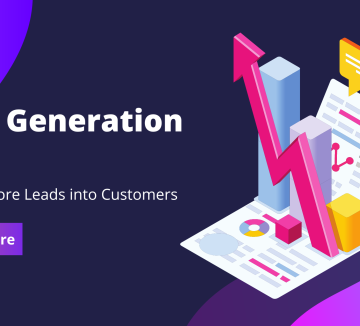Last Updated on April 12, 2023 by David
Email deliverability is a critical aspect of any successful email marketing campaign.
It refers to successfully delivering emails to subscribers’ inboxes rather than getting caught in spam filters or bounced back.
Without good email deliverability, your email marketing efforts will be wasted, as your messages will not reach your intended audience.
In this guide, we’ll explore the key factors that affect email deliverability and provide tips and best practices for maximizing email deliverability.
You may also like:
But first, why does email deliverability even matter?
Why Email Deliverability Matters Means To your Business
As a business owner, your email marketing campaigns are only as effective as your ability to get your messages in front of your subscribers.
Email deliverability is the foundation of effective email marketing.
With good email deliverability, your emails will reach your subscribers’ inboxes, and your marketing efforts will be well-spent.
Whether you’re sending promotional emails, newsletters, or transactional emails, ensuring good email deliverability is crucial for achieving your marketing goals.
In the following section, we’ll explore the key reasons why email deliverability is critical and provide tips and best practices for maximizing email deliverability.
Here are seven key reasons why Email deliverability is a critical factor in email marketing:
Good Email Deliverability Leads To Higher Engagement Rates
Good email deliverability leads to increased engagement from your subscribers.
When your emails are delivered to your subscribers’ inboxes, they have a better chance of being opened, read, and acted upon.
This means that your subscribers are more likely to engage with your content, click through to your website, purchase, or take any other desired action.
Increased engagement leads to better marketing ROI and can help businesses achieve their marketing goals.
Cost-Effectiveness
Email marketing is one of the most cost-effective marketing channels available to businesses of all sizes.
Compared to traditional advertising channels such as TV, radio, or print, email marketing is significantly more affordable and has a higher ROI.
However, to maximize the cost-effectiveness of email marketing, it’s crucial to ensure good email deliverability.
Poor email deliverability results to wasted marketing spend and reduced ROI.
For example, if a business sends out an email campaign to a list of 10,000 subscribers, but only 20% of those emails are delivered to the inbox, the business wastes 80% of its marketing spend.
Improving email deliverability can help businesses achieve better marketing ROI and save money on marketing expenses.
By focusing on list hygiene, email authentication protocols, and email content and formatting, businesses can improve their email deliverability rates and maximize the cost-effectiveness of their email marketing campaigns.
Good Email Deliverability Contributes To a Positive Brand Reputation
Brand reputation is crucial in today’s digital age, where customers can access more information and choices than ever before.
Good email deliverability is an important component of a positive brand reputation.
When subscribers consistently receive your emails without issue, it can help establish your brand as professional, trustworthy, and reliable.
On the other hand, if your emails get caught in spam filters or bounce back, it can harm your brand reputation.
Subscribers may view your brand as spammy or unprofessional, reducing trust and loyalty.
In addition to the direct impact on customer perception, poor email deliverability can indirectly affect brand reputation.
For example, if your emails get caught in spam filters, email service providers may flag your email domain as spammy. This can lead to further issues with email deliverability and harm your long-term brand reputation.
By prioritizing email deliverability and ensuring that your emails reach your subscribers’ inboxes, you can establish a positive brand reputation that increases trust, loyalty, and revenue growth.
High Email Deliverability Indicates Compliance
Compliance is a critical factor in email deliverability.
In the United States, laws such as the CAN-SPAM Act require businesses to obtain explicit consent from subscribers and honor opt-out requests.
Businesses must also provide clear and accurate information about who is sending the email, what it contains, and a physical address.
Failure to comply with these regulations can lead to legal consequences, including fines and other penalties.
Ensuring compliance with these regulations is essential for maintaining a positive sender reputation and avoiding being marked as spam.
It also helps to build trust with your subscribers and establish your brand as professional and trustworthy.
Businesses must also ensure that they are obtaining consent from their subscribers in a compliant manner and that their opt-out processes are easy to use and comply with legal requirements.
Overall, by complying with relevant laws and regulations, businesses can avoid legal issues and maintain a positive reputation, which can help maximize the impact of their email marketing campaigns.
Better Customer Experience Resulting To Higher Revenue Generation
Email deliverability is key to providing a positive customer experience.
When subscribers receive your emails consistently and without issue, they’re more likely to have a positive view of your brand.
On the other hand, if they’re not receiving your emails or if they’re getting caught in spam filters, it can lead to frustration and a negative experience.
By prioritizing email deliverability, businesses can provide a positive customer experience that increases engagement and loyalty.
Ultimately, good email deliverability is critical for revenue generation. If your emails reach your subscribers and engage them, it can increase conversions and sales.
This means businesses must prioritize email deliverability to achieve their marketing goals and drive revenue growth.
By prioritizing email deliverability, businesses can maximize the impact of their email marketing campaigns and achieve their marketing objectives.
Top Tips For Increasing Email Deliverability Rate
Here are important tips to help you increase your email deliverability rate and generate a positive ROI with email marketing campaigns.
Section 1: Building a High-Quality Email List
Building a high-quality email list is a critical factor in maximizing your email deliverability.
A high-quality email list comprises subscribers who have explicitly opted-in to receive your emails and are genuinely interested in your brand and its offerings.
By building a high-quality email list, businesses can improve engagement rates, reduce the likelihood of getting caught in spam filters, and ultimately increase the effectiveness of their email marketing campaigns.
One key strategy for building a high-quality email list is to obtain explicit consent from subscribers.
This means you must obtain permission from subscribers before sending them emails. You can obtain consent through various methods, including sign-up forms on your website, social media channels, or at events.
It’s important to clearly communicate to subscribers what they will receive and how frequently they will receive it.
Additionally, businesses should avoid purchasing email lists, which are often low-quality and can lead to high bounce rates and lower engagement.
Maintaining a clean email list is another important strategy for building a high-quality email list.
This means regularly reviewing your email list and removing inactive or invalid email addresses. Inactive email addresses may increase bounce rates and reduce your sender’s reputation, harming email deliverability.
Removing invalid email addresses can also help to reduce the likelihood of getting caught in spam filters.
Growing your email list organically is also a key strategy for building a high-quality email list.
This means focusing on attracting new subscribers who are genuinely interested in your brand and its offerings.
Some effective strategies for organic list growth include creating high-quality content that encourages subscribers to sign up, offering exclusive discounts or promotions to email subscribers, and leveraging social media and other channels to promote your email list.
Overall, by obtaining explicit consent from subscribers, maintaining a clean email list, and growing your list organically, you can improve engagement rates, reduce the likelihood of getting caught in spam filters, and ultimately increase the effectiveness of your email marketing campaigns.
Section 2: Crafting Effective Email Content
Crafting effective email content is critical for maximizing email deliverability.
When your emails are engaging, relevant, and valuable to your subscribers, they’re likelier to open and engage with your content, improving your email deliverability rates.
To create effective email content, you should focus on several key factors.
First, you need to ensure that your email content is relevant and valuable to your subscribers.
This means understanding their interests and needs and tailoring your content to meet those needs.
Personalization is key here, as it can help connect your subscribers and improve engagement rates.
Second, your email subject lines and preheader text need to be attention-grabbing and relevant to the content of the email.
This is the first thing your subscribers will see, and it can determine whether or not they open your email.
Keep your subject lines concise, and avoid using words or phrases that could trigger spam filters.
Third, the design of your email templates is critical for readability and engagement.
Use a clean and simple design that highlights your content and makes it easy to read.
Avoid cluttered designs, and ensure your email templates are optimized for desktop and mobile devices.
Fourth, consider incorporating personalization in your email content. According to Epsilon, 80% of consumers are more likely to make a purchase from a brand that offers personalized experiences. This can include using your subscribers’ names, location, or other information to create a more personalized experience.
Personalized emails have been shown to have higher engagement rates and can improve your email deliverability rates.
Finally, be mindful of the frequency with which you send emails. Sending too many emails can make subscribers overwhelmed or annoyed, making them mark your emails as spam. Conversely, not sending enough emails can decrease engagement rates and reduce email deliverability.
By focusing on these key factors, you can create effective email content that engages subscribers and maximizes email deliverability rates.
Remember to test and optimize your email content regularly and to stay up-to-date with best practices for email marketing.
By prioritizing effective email content, you can ensure your email marketing campaigns succeed and achieve your marketing objectives.
Section 3: Technical Considerations for Maximizing Deliverability
Technical considerations are a crucial aspect of maximizing email deliverability.
Technical factors such as email authentication protocols, formatting, and sending frequency all affect whether your emails are delivered to your subscribers’ inboxes.
One important technical consideration for maximizing email deliverability is email authentication protocols.
Three main protocols are used to authenticate email: SPF, DKIM, and DMARC.
- SPF (Sender Policy Framework) is used to verify that an email message was sent from an authorized IP address.
- DKIM (DomainKeys Identified Mail) is used to verify that the email message was not altered during transit.
- DMARC (Domain-based Message Authentication, Reporting, and Conformance) is used to verify that the email is from the domain it claims to be from.
Configuring these protocols correctly is essential for ensuring good email deliverability.
Without proper authentication, your emails are more likely to get caught in spam filters or marked as spam by email providers.
You should ensure your email authentication protocols are properly configured, and their emails pass authentication tests.
Another important technical consideration for maximizing email deliverability is email formatting.
Emails that are poorly formatted or have broken HTML code are more likely to be marked as spam or get caught in spam filters.
Businesses should ensure their emails are properly formatted and optimized for readability and engagement.
Email sending frequency is another important technical consideration for maximizing email deliverability.
Sending too many emails or sending them too frequently can lead subscribers to mark your emails as spam or even unsubscribe from your list.
On the other hand, sending emails infrequently can lead to disengagement from your subscribers. Finding the right balance is important for maximizing engagement and avoiding spam complaints.
Section 4: Navigating Spam Filters and Email Bots
Navigating spam filters and email bots is critical to maximizing email deliverability.
Spam filters are designed to identify and block unwanted or unsolicited emails, while email bots are programs that automatically crawl and interact with email accounts.
If your emails get caught in spam filters or flagged as being sent by email bots, they’re less likely to reach your subscribers’ inboxes.
To avoid being caught in spam filters, it’s important to understand common spam filter triggers.
These triggers can include certain words or phrases in your subject lines or email content, using all caps or excessive punctuation, or even the absence of a physical mailing address.
By avoiding these triggers, you can increase the chances of your emails being delivered to your subscribers’ inboxes.
Another important strategy for avoiding spam filters is to monitor your email engagement rates.
If your emails have consistently low open or click-through rates, it’s a sign that they need to be resonating with your subscribers and may be getting caught in spam filters as a result.
To improve engagement rates, consider testing different email content, subject lines, or sending times to see what resonates with your subscribers.
Email bots can also pose a threat to email deliverability. Some email bots automatically flag emails as spam or mark them as read, negatively impacting your email engagement rates and deliverability.
To avoid these issues, monitoring your email engagement rates and adjusting your email campaigns is important.
Businesses can also implement various technical strategies to navigate spam filters and email bots.
These may include configuring email authentication protocols such as SPF, DKIM, and DMARC, which help to verify that emails are coming from a trusted source. It’s also important to ensure that your emails are properly formatted and structured, with clear headers and body text.
In addition, some email marketing platforms offer features that can help businesses avoid spam filters and email bots.
For example, some platforms automatically scan emails for spam filter triggers and suggest changes to improve deliverability. Others offer deliverability reports that provide insight into your emails’ performance and the steps you can take to improve deliverability.
Overall, navigating spam filters and email bots is an important part of maximizing email deliverability.
By understanding common spam filter triggers, monitoring your email engagement rates, implementing technical strategies, and using the right email marketing platform, businesses can improve their chances of successfully reaching their subscribers’ inboxes.
Section 5: Maintaining a Good Sender Reputation
Maintaining a good sender reputation is a crucial aspect of email deliverability.
Sender reputation is a score assigned by Internet Service Providers (ISPs) based on various factors, including email content, sending practices, and engagement rates.
A good sender reputation ensures that your emails are delivered to your subscribers’ inboxes and not marked as spam.
To maintain a good sender reputation, monitor your email-sending practices and ensure that they comply with best practices. This means sending relevant and engaging content that your subscribers have opted in to receive and avoiding sending spammy or irrelevant messages.
Maintaining a clean email list is important by removing inactive or invalid email addresses and ensuring subscribers have given explicit consent to receive your emails.
Another key factor in maintaining a good sender reputation is monitoring your email engagement rates.
This includes tracking your email open, click-through, and unsubscribe rates. If your engagement rates are low, it can signal to ISPs that your emails are not relevant or engaging, which can harm your sender’s reputation and lead to emails being marked as spam.
One way to monitor your email engagement rates is to use email feedback loops. Feedback loops are a way for ISPs to provide feedback to senders about complaints and other issues related to email delivery.
You can identify and address issues that may harm your sender’s reputation by using feedback loops.
Handling email bounces and complaints is important for maintaining a good sender reputation.
When you receive an email bounce, it means that your email was not delivered to the recipient’s inbox.
You can use bounce reports to identify and remove invalid email addresses from your list.
Similarly, when you receive an email complaint, it means that a recipient has marked your email as spam. Use this feedback to improve your email content and sending practices.
Section 6: Troubleshooting Email Deliverability Issues
Despite your best efforts, you may still experience email deliverability issues.
Common email deliverability issues include emails getting caught in spam filters, being bounced back, or not being delivered at all.
To troubleshoot these issues, it’s important to identify their causes and take steps to resolve them.
One of the most common reasons emails don’t get delivered is that they’re caught in spam filters.
Spam filters use a variety of criteria to determine whether an email is a spam, including sender reputation, email content, and other technical factors.
To avoid getting caught in spam filters, ensure your emails comply with best practices for email content, sender reputation, and technical factors such as email authentication protocols.
Another common cause of email deliverability issues is a high rate of email bounces. An email bounce occurs when an email is returned to the sender because it couldn’t be delivered to the recipient’s inbox.
Bounces can be caused by various factors, including invalid email addresses, full mailboxes, or technical issues on the recipient’s end.
To reduce email bounces, businesses must ensure their email list is clean and up-to-date and send emails only to valid email addresses.
Technical factors can also impact email deliverability. For example, misconfigured email authentication protocols such as SPF, DKIM, and DMARC can lead to email deliverability issues.
These protocols help verify the sender’s authenticity and ensure that the email is not a spoofed message.
By properly configuring these protocols, businesses can improve their email deliverability rates and reduce the likelihood of their emails getting caught in spam filters.
Conclusion:
Maximizing email deliverability requires a combination of technical knowledge and effective email marketing strategies.
By building a high-quality email list, crafting engaging email content, and navigating technical considerations such as email authentication protocols and spam filters, you can improve your email deliverability rates and maximize the impact of your email marketing campaigns.
Remember to monitor your email engagement rates and maintain a good sender reputation to ensure ongoing success.
By following the tips and best practices outlined in this guide, you can become an email deliverability expert and improve the effectiveness of your email marketing efforts.
Email deliverability refers to the ability of an email to successfully reach the intended recipient’s inbox. It’s important because if your emails are not being delivered, your marketing campaigns or important communications may not be reaching your audience. Poor deliverability can negatively impact your sender reputation and hurt future email campaigns.
Best practices for improving email deliverability include using a double opt-in process, maintaining a clean email list, personalizing emails, avoiding spam trigger words, testing emails before sending, and using a reputable email service provider.
You can use email tracking tools, such as email analytics software, to see if your emails are being delivered and how recipients are interacting with them. You can also check your email metrics, such as open rates and click-through rates, to see if your emails are performing well.
Factors that can negatively impact email deliverability include a poor sender reputation, using spam trigger words or phrases, sending to a large number of inactive email addresses, not using a double opt-in process, and using a non-permission-based email list.
To avoid triggering spam filters, you can avoid using spam trigger words or phrases, use a reputable email service provider, personalize your emails, segment your email list, use a clear call-to-action, and test your emails before sending them.




